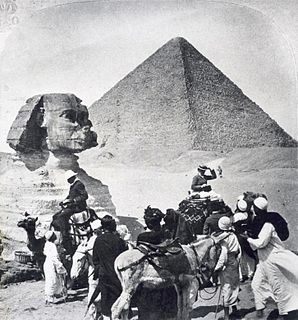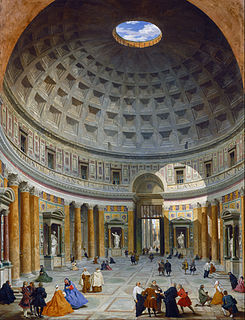 W
WCultural tourism is a type of tourism activity in which the visitor’s essential motivation is to learn, discover, experience and consume the tangible and intangible cultural attractions/products in a tourism destination. These attractions/products relate to a set of distinctive material, intellectual, spiritual and emotional features of a society that encompasses arts and architecture, historical and cultural heritage, culinary heritage, literature, music, creative industries and the living cultures with their lifestyles, value systems, beliefs and traditions.
 W
WArchaeotourism or Archaeological tourism is a form of cultural tourism, which aims to promote public interest in archaeology and the conservation of historical sites.
 W
WCoal River Precinct is a heritage-listed historic precinct at Nobby's Road, Newcastle, City of Newcastle, New South Wales, Australia. It was built from 1804 to 1960. It includes Fort Scratchley, Nobby's Head, the Convict Lumber Yard site, Macquarie Pier, the breakwater and Nobby's Beach. It was added to the New South Wales State Heritage Register on 19 December 2003.
 W
WCraft beer tourism refers to tourism where the primary motivation of travel is to visit a brewery, beer festival, beer related activity or other event that allows attendees to experience all aspects of the craft beer-making, consuming and purchasing process. Travel and tourism constitute one of the largest industries in the world, with Americans spending a total of $1.1 trillion in domestic and international travel in 2018. The beer tourism industry has evolved from the larger culinary and beverage tourism category in which people began planning travels based around experiencing food and drink of different geographies. Informally, vacations centric to the theme of enjoying beer have been dubbed "beercations".
 W
WDark tourism has been defined as tourism involving travel to places historically associated with death and tragedy. More recently, it was suggested that the concept should also include reasons tourists visit that site, since the site's attributes alone may not make a visitor a "dark tourist". The main attraction to dark locations is their historical value rather than their associations with death and suffering. Holocaust tourism contains aspects of both dark tourism and heritage tourism.
 W
WA destination painting or bucket list painting is a painting that in itself may inspire cultural tourism to a museum or other destination. Often such a work would be considered a "masterpiece". A more general characterization would be destination art, which is the subject of a guide from Phaidon Press which focuses more on contemporary installation art.
 W
WDracula tourism is a type of cultural tourism involving travel to sites associated with Dracula and his real or imaginary travels. There is Dracula Tourism in Transylvania, Romania and in the United Kingdom.
 W
WThe Grand Tour was the 17th- and 18th-century custom of a traditional trip through Europe undertaken by upper-class young European men of sufficient means and rank when they had come of age.
 W
WThe Heritage Rose District of New York City is the only rose district in the United States. It is the result of the efforts of the Office of the Manhattan Borough President and the Heritage Rose Foundation, a non-profit organization dedicated to the preservation of old roses.
 W
WCultural heritage tourism is a branch of tourism oriented towards the cultural heritage of the location where tourism is occurring.
 W
WHolocaust tourism is round-trip travel to destinations connected with the extermination of Jews during the Holocaust in World War II, including visits to sites of Jewish martyrology such as former Nazi death camps and concentration camps turned into state museums. It belongs to a category of the so-called 'roots tourism' usually across parts of Central Europe, or, more generally, the Western-style dark tourism to sites of death and disaster.
 W
WThe Jefferson Davis Highway, also known as the Jefferson Davis Memorial Highway, was a planned transcontinental highway in the United States in the 1910s and 1920s that began in Arlington, Virginia, and extended south and west to San Diego, California; it was named for Jefferson Davis, President of the Confederate States, United States senator, and Secretary of War. Because of unintended conflict between the National Auto Trail movement and the federal government, it is unclear whether it ever really existed in the complete form that its United Daughters of the Confederacy (UDC) founders originally intended.
 W
WLiterary tourism is a type of cultural tourism that deals with places and events from fictional texts as well as the lives of their authors. This could include following the route taken by a fictional character, visiting particular place associated with a novel or a novelist, such as their home, or visiting a poet's grave. Some scholars regard literary tourism as a contemporary type of secular pilgrimage. There are also long-distance walking routes associated with writers, such as the Thomas Hardy Way.
 W
WThe National Memorial for Peace and Justice, informally known as the National Lynching Memorial, is a national memorial to commemorate the Black victims of lynching in the United States. While White individuals were also lynched, this memorial is intended to focus on and acknowledge past racial terrorism and advocate for social justice in America. Founded by the non-profit Equal Justice Initiative, it opened in downtown Montgomery, Alabama on April 26, 2018.
 W
WPop-culture tourism is the act of traveling to locations featured in popular literature, film, music, or any other form of media. Also referred to as a "Location Vacation".
 W
WTolkien tourism is a phenomenon of fans of The Lord of the Rings fictional universe travelling to sites of film- and book-related significance. It is especially notable in New Zealand, site of the movie trilogy by Peter Jackson, where it is credited as having raised the annual tourism numbers.
 W
WTwogether is a travel documentary starring Lee Seung-gi and Jasper Liu. It was released by Netflix on June 26, 2020.